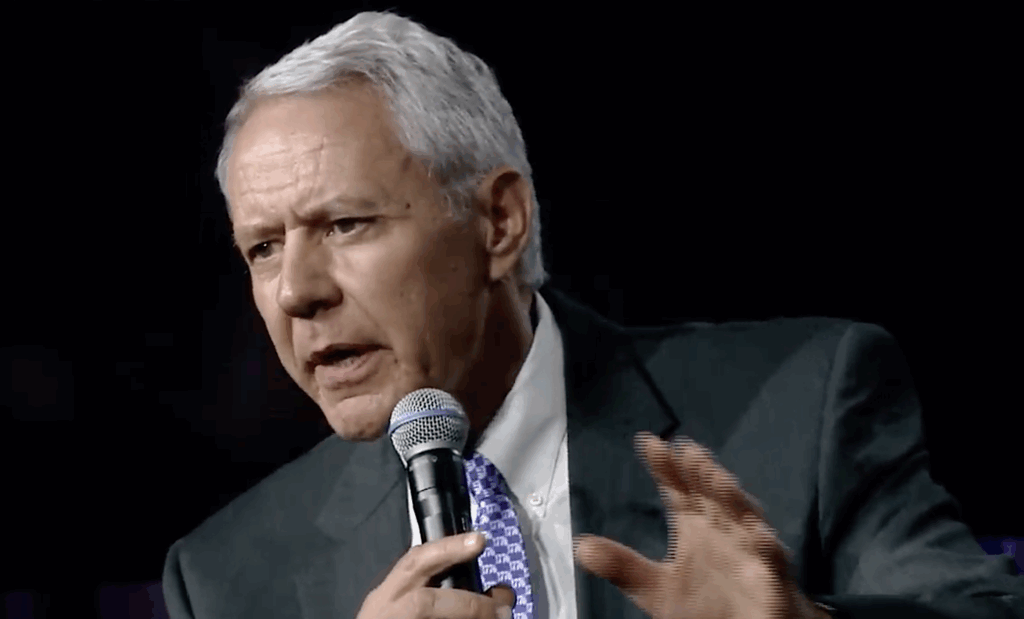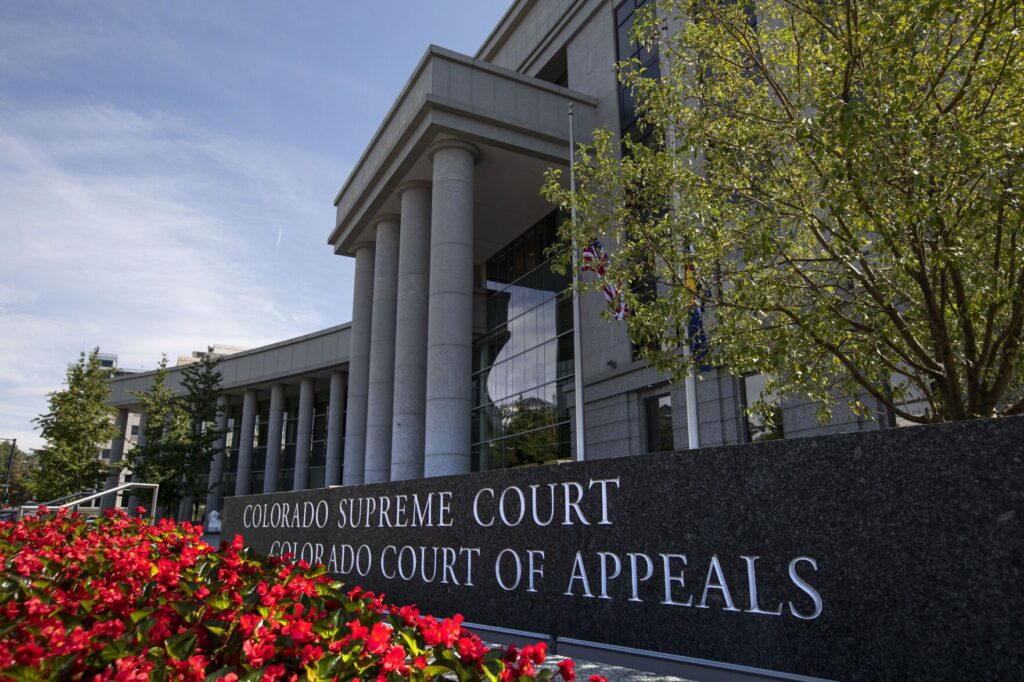Amara annexation: City Council girds for possible final vote amid intense debate
Impassioned debate continues over the projected impact of the Amara annexation on municipal utility ratepayers, as Colorado Springs City Council’s second and possibly final vote on the massive development approaches Tuesday.
Two councilwomen opposed to Amara said they are concerned that ratepayers, particularly larger commercial and industrial users, may not have initially realized they are projected to pay multiple thousands to millions of dollars in additional utilities costs to help pay for infrastructure that will serve the proposed community of up to 9,500 homes and retail and other spaces.
Colorado Springs Utilities official, developers clash over Amara’s impact
“In addition to the potential for stranded assets, there is an incredible cost for building (Amara),” said Councilwoman Nancy Henjum. “This rider will impact not just individual residents and their bills, but also the businesses that serve us. Depending on that cost, they’re going to pass it onto their customers, citizens, ratepayers.” Henjum voted against Amara’s annexation request last month.
Developer La Plata Communities, the company that built other master planned communities like Briargate and Cordera, maintains the projected utilities costs for Amara, spread out over about 20 years, will not present financial burdens for ratepayers.
The development is also not directly responsible for city-owned Colorado Springs Utilities’ need to implement an additional line-item charge that is not included in standard rates, called a rider, to fund Amara-related costs, they said.
Utilities has estimated over the 24-year life of the project it will cost between $150 million to $230 million to build necessary infrastructure like gas service lines, facilities like electric substations, and generate some additional resources to provide electricity, gas, water and wastewater to Amara.
For months, utilities officials have said the development could place the agency in financial risk.
The Amara request comes before the city at a time when Utilities faces increased reliability and regulatory costs for its existing system, to the tune of a projected additional $3.4 billion between 2025 and 2029, before Amara-related costs.
If the city does not implement a rider for Amara, Utilities may have to delay or reprioritize planned capital projects to pay for infrastructure that will serve the new community, the agency has said, which could negatively impact service reliability and growth in areas already inside city boundaries.
Contrasting opinions fly as Amara development approved by Colorado Springs City Council
La Plata Chief Operating Officer Mike Ruebenson repeated statements Friday that anticipated increased utilities costs aren’t being driven by Amara. The rider is needed because Colorado Springs Utilities deferred base rate increases in past years that support regulatory and reliability requirements, consuming the agency’s debt capacity and putting “major pressure” on base rates, he said.
“It’s an unfair and disingenuous statement to say that Amara is causing this calamity throughout the city when you look at the reality of it,” Ruebenson said.
Utilities spokeswoman Danielle Nieves said the agency has not deferred regulatory costs because those are “priority projects.” Regulatory requirements the agency faces for energy have been in place since 2020 and must be met by 2030, she said.
“The primary drivers for a bill rider with the proposed Amara annexation are the timing and the amount of capital needs for this project,” Nieves said. It is “the most fiscally responsible method given the challenges that we are currently facing.”

This chart shows the estimated impacts over an 11-year period the Amara development could have on Colorado Springs Utilities ratepayers if the property annexes into Colorado Springs boundaries. These rates are estimated with the assumption that the City Council approves using a rider, or an additional utility charge not included in standard rates, to repay an estimated $150 million to $250 million in utilities capital costs for the development.
If a rider goes into effect, it would be in place for between five to 10 years. Utilities projects the average commercial customer could see their bill rise by about $96 a month for the first year, or 6.66% more than the current average commercial bill of about $1,400 a month.
Industrial users could pay nearly $4,000 more a month in the first year, an increase of 8.91%.
The anticipated rates drop dramatically in the second year and fluctuate over the following 10 years, between $6.72 a month in the second year and up to $44.92 a month in year 11 for commercial users, according to a utilities sample bill impact chart.
Anticipated rates drop to about $186 a month for industrial users in the second year and also fluctuate in subsequent years, raising again as high as around $2,392 a month in the fifth year, the chart shows.
Large organizations across the city might have to take on “huge” additional utilities costs, Councilwoman Lynette Crow-Iverson said. She has also opposed the development.
The University of Colorado Colorado Springs expects to pay roughly another $684,500 over 11 years in rider costs.
UCHealth estimates its financial impact will be more than $1.2 million over 11 years, “with approximately 40% of that cost incurred during the first year,” spokeswoman Cary Vogrin said.
El Paso County projects to pay nearly $657,000 over 11 years; the city roughly $993,000; and Colorado Springs Utilities more than $2.5 million in rider costs, figures provided by both governments and the agency show.
“People are looking at this and going, ‘holy cow,'” Crow-Iverson said.
Both UCCS and UCHealth said their organizations take no position on the Amara annexation.
UCCS spokesman Chris Valentine said university officials will continue to balance the school’s annual budgets and provide services, now factoring in the larger utilities costs over the next five to 11 years like any other inflationary costs.
Increased utilities charges do present an added “challenge” for the university that cut $4 million from its 2024-2025 fiscal year budget and bumped up tuition for in- and out-of-state students by 3% and 4%, respectively, Valentine said. Tuition hikes were not necessitated by planned increases in utilities costs, but because “the cost of doing business has gone up,” he said.
UCCS largely pays utilities through its general fund bankrolled by state dollars, student fees and tuition.
“This just adds another piece to the puzzle that we have to work through over the next 11 years,” Valentine said.
Vogrin did not address The Gazette’s questions about whether UCHealth is concerned that rider costs could impact health system operations, patients or employees.
Amara’s Ruebenson said anticipated utilities costs “are not trivial at all,” but are “a drop in the bucket” for institutions like UCCS, which has a 2024 fiscal year spending plan totaling about $358 million.
Colorado Springs’ 2024 budget totals about $900 million, El Paso County’s $491 million, and Utilities’ $1.5 billion. The UCHealth system’s 2023 fiscal year budget totaled about $6.9 billion.
UCCS’ rider costs over 11 years amount to less than $63,600 a year, Ruebenson said.
“Although not chump change, it equates to … less than what one out-of-state student pays UCCS over his or her four-year program,” he said.
Ruebenson said again Friday Colorado Springs Utilities has acknowledged its costs to serve Amara are comparable to its costs to serve other new, similar developments in the city.
‘Complex’ wastewater system expansion will support Colorado Springs’ continued growth: Utilities
In some cases, Amara’s projected utilities costs are less than other infrastructure costs. Ruebenson pointed to the city’s planned six-year, $396 million expansion of its eastern wastewater system that officials hope to complete by 2030. Much of the Eastern Wastewater System serves the roughly 24,000-acre Banning Lewis Ranch development.
Typically, ratepayers pay for wastewater treatment while developers pay for pipes and conveyance mechanisms, Utilities previously said.
In the case of the Eastern Wastewater System expansion, Utilities acts as the “developer.” The agency is covering most of the upfront costs to serve eastern Colorado Springs through base rates, then recovers those costs later from future users, through charges paid by homebuilders of future homes that are ultimately passed on to the homebuyer.
“Colorado Springs Utilities is, in essence, funding this Banning Lewis Ranch utility expansion on the backs of current ratepayers for what the Banning Lewis Ranch developer should be paying, and what other developments traditionally pay. Amara, on the other hand, is covering its own costs,” Ruebenson said.
The political jousting between developers including La Plata and Norwood Development Group of Banning Lewis Ranch over the Amara annexation has been a major subtext of the city’s deliberations, with Norwood, among others, insisting that land already inside the city should be served first.
For example, Norwood previously planned to ask voters to approve a stringent water rule that would have prioritized water service to developments already in city boundaries and could have blocked new annexations like Amara for decades.
The City Council subsequently, in early 2023, adopted a less stringent water rule. It requires Colorado Springs Utilities to have a surplus of water, enough to serve existing city demand and the projected demand from new properties. Initially, the city’s rule still appeared to block Amara’s annexation, but Utilities confirmed last month the project meets water supply requirements.
Utilities’ policies allow the agency to construct extensions “when it is in the best interest based on significant system, operational, environmental and community development considerations,” Nieves said.
Continued development in existing city boundaries is primarily happening eastward.
Developer seeks annexation of southwestern El Paso County land for Colorado Springs water
“Because wastewater service is an essential component for city growth to occur, and because the extension of service meets the above criteria, we must act as developer to expand our wastewater infrastructure now to be able to serve those anticipated needs,” Nieves said.
Ruebenson said Colorado Springs Utilities has always invested in growth, including annexations.
“This investment will improve Utilities’ bottom line moving forward,” he said.
Nieves and Crow-Iverson said the difference lies in the agency’s obligation to serve customers living in existing city boundaries.
“These developments are already within the city limits and Utilities has an obligation to serve these customers. Annexations are outside of the city, and we are not obligated to serve them until City Council approves them,” Crow-Iverson said.











